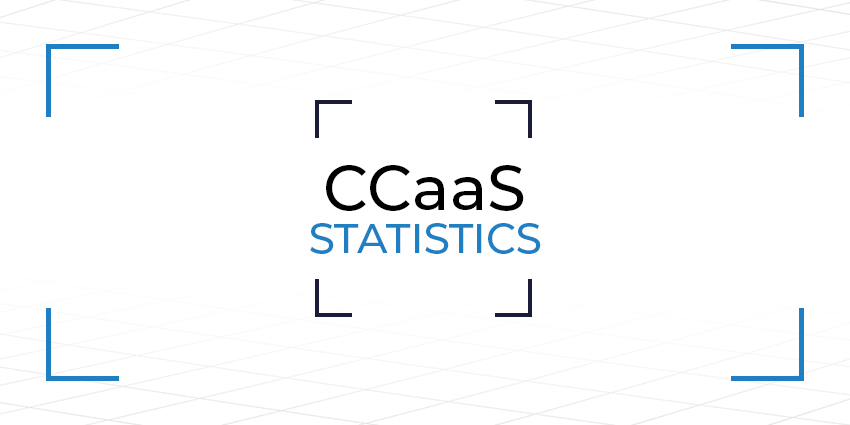It’s no secret that customer experience is the key to a successful business these days.
If you want to outshine the competition and keep earning new opportunities for sales, then you need to have the right contact centre technology in place. That’s probably why Grandview Research says that contact centre software will reach a value of $72.3 billion by 2027.
The contact centre is an essential connection point between your customer and company. Knowing how to leverage this technology to your advantage ensures that you can access happier clients, better word of mouth, and improved revenue.
Contact centre as a service combines all the benefits of a reliable contact centre, with the flexibility and diversity of the cloud.
Building a Business Case for CCaaS
All companies, no matter how large, need a contact centre strategy to connect with their audience.
Contact centre solutions ensure that you can answer any questions your clients might have, reach out with proactive service, and more. However, the contact centre as we know it is growing more complex. Phone call conversations aren’t the only option for teams anymore.
79% of customers prefer live chat over phone conversations today, and video meeting technology is opening the door for different kinds of interactions. An on-premise contact centre would struggle to keep up with all of these changes. However, that’s not the case with CCaaS.
Through Contact Centre as a Service solutions, companies can easily add and remove features from the contact centre however they choose. CCaaS is adaptable, affordable, and always ready to deliver the latest communication tools.
Top 10 CCaaS Facts You Need to Know
Contact Centres and the customers that interact with them are constantly evolving.
As clients have begun to demand more from their conversations with companies, CCaaS has evolved. Today’s solutions are more versatile than ever, including everything from integrations with leading tools like Microsoft Teams, to APIs and SDKs.
The cloud-based contact centre also opens the door to more convenient work processes like remote and distance working. Here are some of the facts you need to know as you’re planning your CCaaS strategy:
- Cloud adoption is growing: Gartner found that only 10% of contact centres are currently using the cloud to connect with consumers. However, the number is set to increase to around 50% by 2022. The growth may be even larger following COVID-19. Source: Gartner
- Access to AI is a selling point of CCaaS: One of the biggest selling points of cloud-based technologies, is easy access to disruptive tools. Aberdeen found that companies with access to artificial intelligence get 2.4 times higher increases in revenue year over year. CCaaS provides easy access to this kind of intelligence. Source: Business 2 Community.
- Customers demand more: CCaaS could be crucial to keeping up with customer appetites. Microsoft studies found that customers now have higher expectations when interacting with companies on a global basis. Source: Microsoft
- Integration is a common concern: Though many companies are keen to move to CCaaS, 62% say that the biggest challenge in making future investments will come from trying to integrate with current software. Source: Customer Contact Week
- CCaaS could offer an edge: Many companies are struggling to adopt modern tools in the contact centre, like cloud technology, AI, and more. Two thirds of responders in one study said they were “behind the curve”. This indicates a great chance differentiation. Source: Liveops Call Centre report.
- Analytics are another opportunity: 66% of contact centres say that they’re looking forward to investing in advanced analytics to support the customer journey. These analytics will be easier to align through cloud-based contact centres. Source: Customer Contact Week
- Cloud journeys are on the horizon: 61% of companies say that they’re planning on switching their contact centre into the cloud. This number came even before the impact of COVID-19 changed the landscape. Source: Dimension data.
- CCaaS simplifies omnichannel contact centres: One of the biggest benefits of CCaaS is that it makes it easy to align omnichannel contact centre environments. Microsoft found that around 66% of companies are using at least 3 communication channels to connect with brands. Source: Microsoft.
- The CCaaS market is growing: The global CCaaS market will reach a value of around $37.2 billion by 2027 according to some statistics. Source: IT Technology.
- Customers want more innovation: Today’s clients want companies to invest in more innovative contact centre tools. Around 57% of consumers say that change is crucial to evolve the contact centre. Source: Salesforce.
Top CCaaS Statistics for Your Business Case
As companies continue to recognise the value of “as a service” solutions for communication and technology, CCaaS is gaining traction as one of the most popular avenues for growth.
The demand for CCaaS has been steadily growing as companies continue their digital transformation paths to the cloud. However, the journey has begun to accelerate recently, as the COVID-19 pandemic of 2020 showed businesses that they aren’t properly prepared for the future.
Let’s take a look at some of the key stats for your CCaaS business case.
- Remote work is growing: We’re beginning to see how valuable remote work can be to the contact centre environment. Some studies suggest that remote employees work up to 1.4 days more each month than their office-based colleagues. Source: Business News Daily.
- CCaaS supports agile teams: Leading Belgium telco, VOO found that after moving 188 agents to a cloud solution, absenteeism dropped from 62% to 5%. The calls per team also increased from 1300 to 1800 each day. Source: Odigo
- Current contact centres aren’t enough: Old fashioned contact centres may not be enough for today’s customers. Around 90% of customers say they need immediate responses to questions, which can be tough with an on-premise system. Source: Hubspot.
- CCaaS opens the door to new opportunities: With CCaaS, companies can easily tap into new reporting and analytics tools. Using customer intelligence in the contact centre improves revenue by around 15%. Source: McKinsey.
- Today’s agents don’t have the right tools: Despite the importance of excellent customer service, 60% of contact centre agents say that they don’t have the right tools available to fix common CX challenges. For instance, 34% say they can’t access customer information easily. Source: Taylor Reach.
- CCaaS is more efficient: Cloud contact centres are more efficient, suffering from around 35% less downtime than on-premise tools. CCaaS can also be up to 27% cheaper than paying for an on-premise strategy. Source: Finances Online.
- CCaaS saves money in other ways: By ensuring that you can serve your customers on all of the right channels, CCaaS also saves money on lost opportunities. Every year, businesses lose around $75 billion on bad customer experiences. Source: Forbes.
- CCaaS could solve the data problem: Better customer data leads to stronger experiences. However, only 13% of companies say that they’re satisfied with their ability to use data to power customer interactions. CCaaS could solve this issue. Source: Aberdeen Customer Experience Executive Agenda 2018.
- There are plenty of cloud benefits to discover: Companies say that call routing (45%) and call recording (37%) are the most exciting tools to come from CCaaS. Source: MaxContact.
- Work from home models would save companies money: CCaaS and cloud contact centres open the door to work-from-home models. Every staff member that works from home can save their employer up to $25,000. Source: Frost and Sullivan







